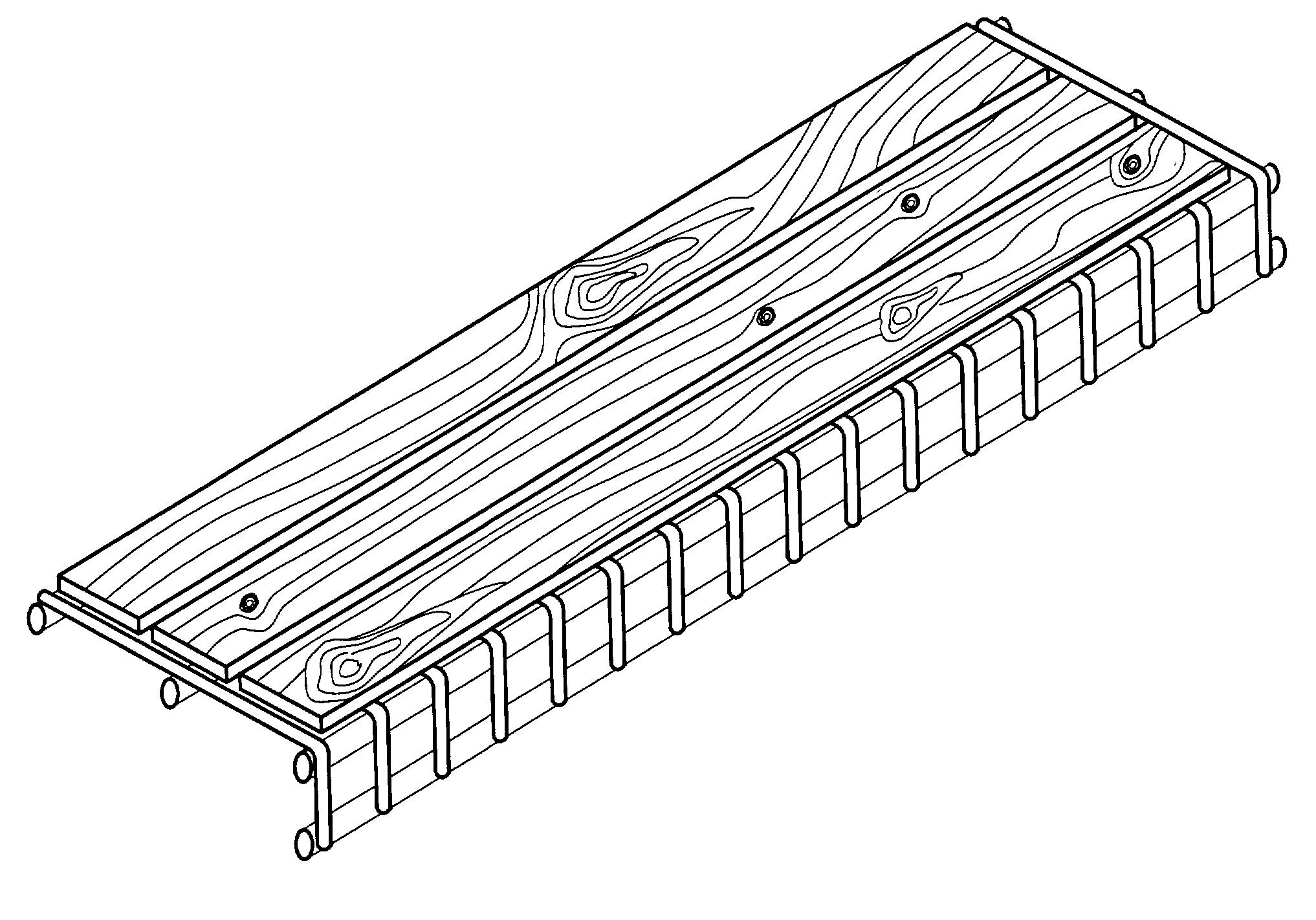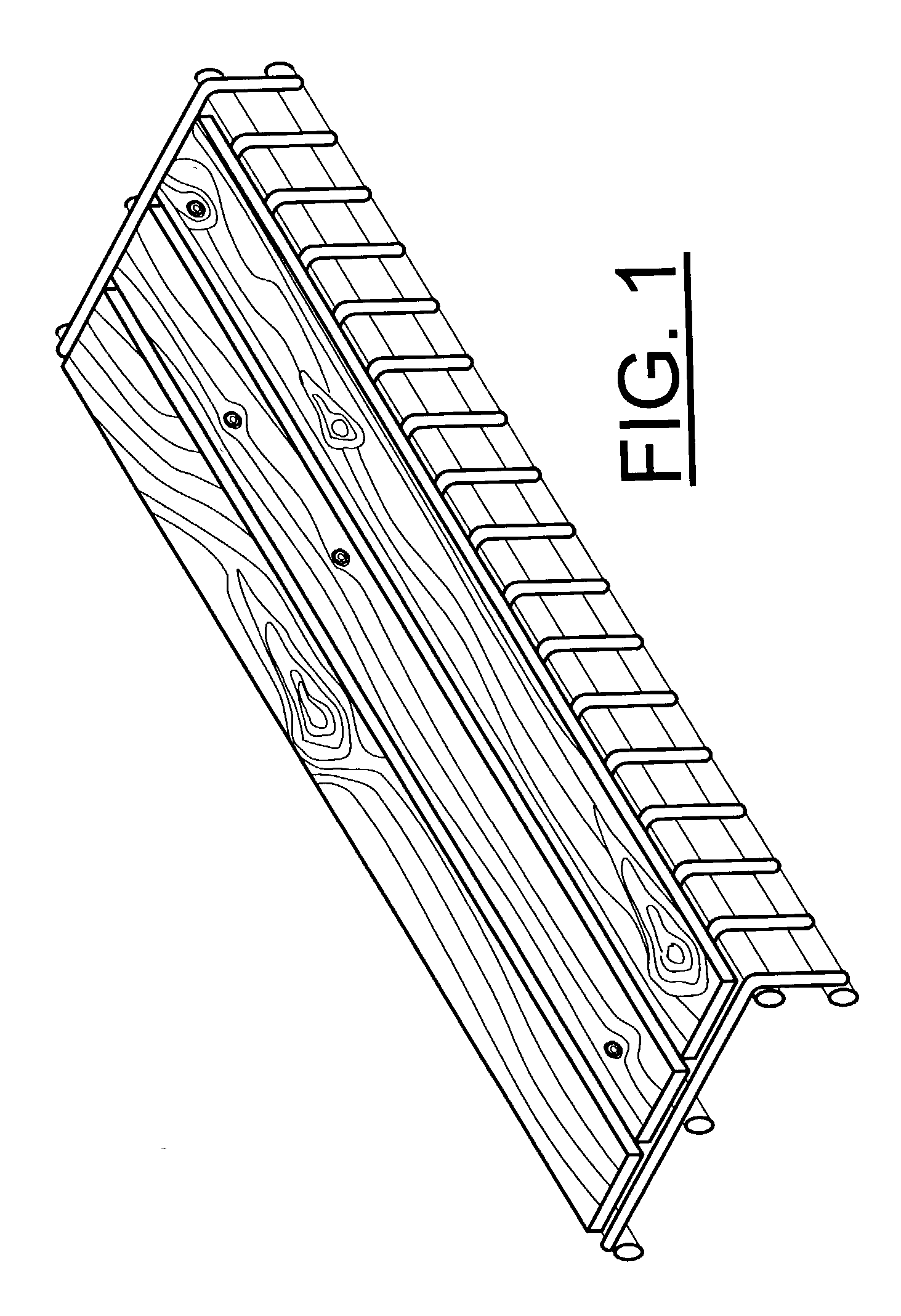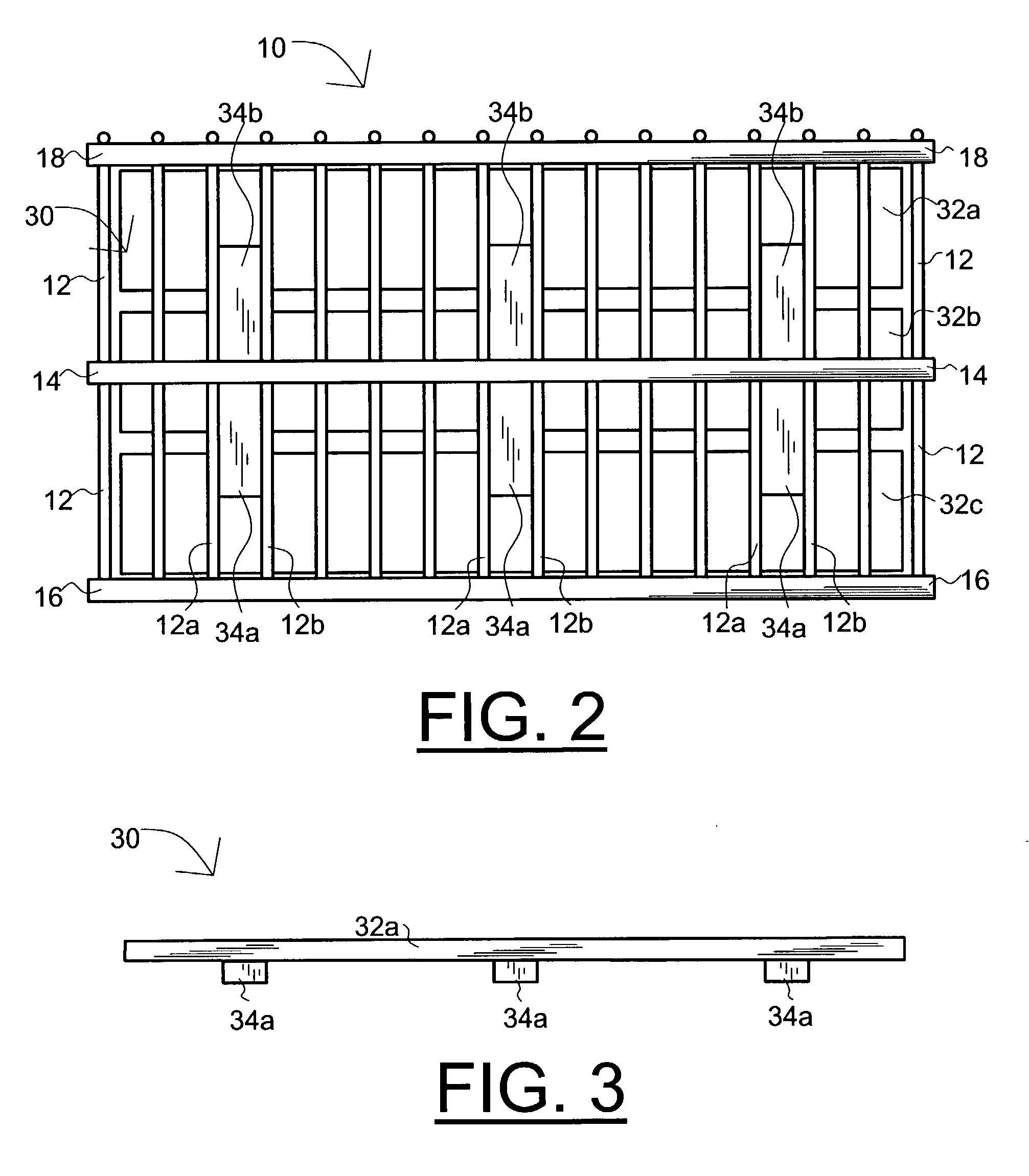Shelving unit
a technology for shelving units and shelves, applied in the field of shelving units, can solve the problems of metal or rust stains on stored clothing and other valuable items, leave imprints on items, and are especially sever
- Summary
- Abstract
- Description
- Claims
- Application Information
AI Technical Summary
Benefits of technology
Problems solved by technology
Method used
Image
Examples
Embodiment Construction
[0037] With reference to FIGS. 1-10, the shelving unit of the present invention is designated generally by the numeral 30. The wire rack with which it is configured to be used is designated by the numeral 10. As shown in the side view of FIG. 6, a simple wire rack 10 has a rear support rod 16 and a front support rod 24 joined by a plurality of coplanar transverse cross wires 12 to form a horizontal plane. The plurality of support wires can be seen in FIGS. 1 and 2. Various modifications to this basic design are made by different manufacturers to reinforce cross wires 12 and / or provide for attaching points for mounting hardware or for hanging clothing by means of cloths hangers.
[0038] In the wire rack shown in FIGS. 1, 2, and 4, the transverse cross wires 12 are bent downward around rod 24 to join a lower rod 18. In FIG. 5, the lower and upper rods 18, 24 are joined by post 26. In wire rack 10 of FIG. 6, the lower rod has been omitted completely.
[0039] Depending on the manufacturer, ...
PUM
 Login to View More
Login to View More Abstract
Description
Claims
Application Information
 Login to View More
Login to View More - R&D
- Intellectual Property
- Life Sciences
- Materials
- Tech Scout
- Unparalleled Data Quality
- Higher Quality Content
- 60% Fewer Hallucinations
Browse by: Latest US Patents, China's latest patents, Technical Efficacy Thesaurus, Application Domain, Technology Topic, Popular Technical Reports.
© 2025 PatSnap. All rights reserved.Legal|Privacy policy|Modern Slavery Act Transparency Statement|Sitemap|About US| Contact US: help@patsnap.com



